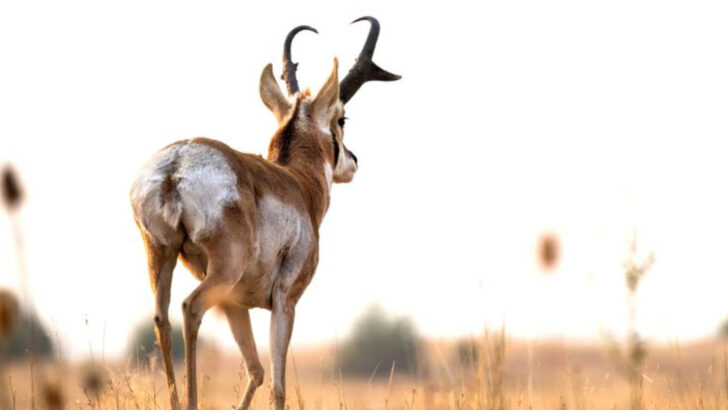Texas is wilder than you think. With its vast plains, dense forests, and everything in between, the Lone Star State is home to a jaw-dropping array of wildlife. From creatures that roam the open grasslands to those that thrive in hidden swamps, Texas holds some of the most fascinating animals in North America.
Get ready to meet the wildlife that makes this state a true natural wonder. Whether it’s the graceful white-tailed deer or the elusive ocelot, these animals thrive in Texas’ wild corners, proving there’s more to the state than meets the eye.
Whether you’re a local or a visitor, Texas is waiting to surprise you with its untamed creatures. Join us as we uncover 21 remarkable animals that make this state one of the most diverse and exciting places to explore!
Nine-banded Armadillo
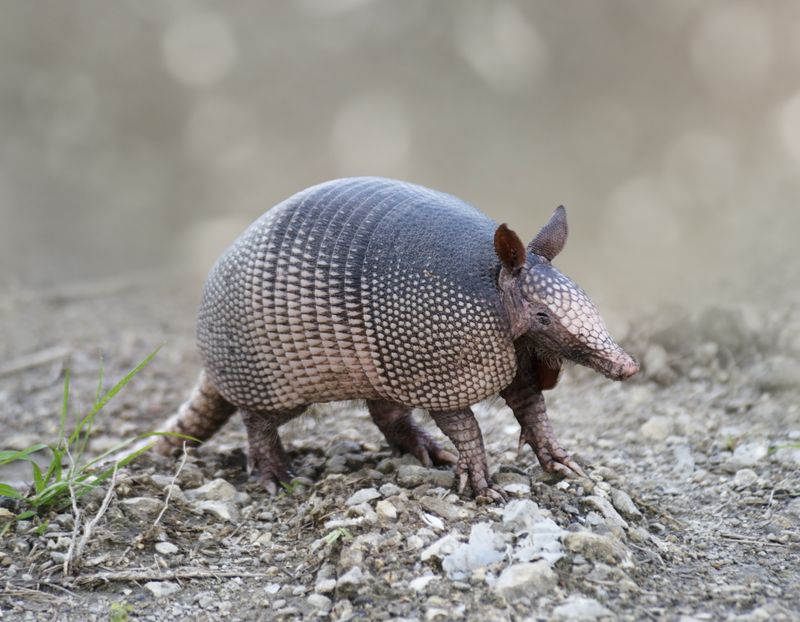
The nine-banded armadillo is an iconic species in Texas, often seen scurrying across roads or digging in gardens. These creatures are known for their unique leathery armor, which provides them with a formidable defense against predators.
They thrive in a variety of environments, from woodlands to grasslands, showing incredible adaptability. Armadillos are fascinating diggers, using their sharp claws to excavate burrows, which serve as homes and places of refuge.
Despite their armored appearance, these creatures are surprisingly agile, capable of crossing rivers by inflating their intestines for buoyancy or simply walking underwater.
Texas Horned Lizard
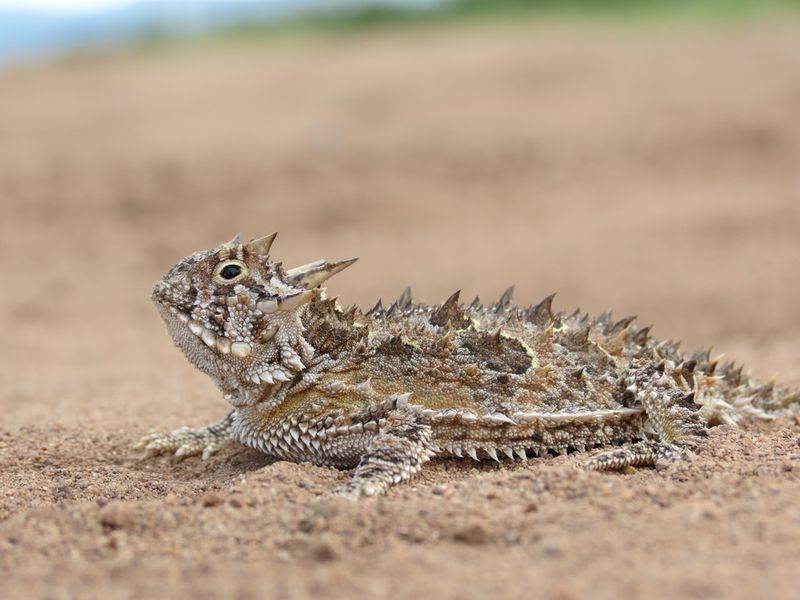
The Texas horned lizard is a small yet mighty reptile that captures the spirit of the Lone Star State. Known for its distinctive horned appearance, this lizard can be found camouflaging in desert terrains and grasslands.
Its spiky body is a natural defense, deterring predators with its formidable look. Interestingly, the Texas horned lizard has a unique defense mechanism: it can squirt blood from its eyes to confuse attackers.
This remarkable ability, combined with its territorial nature, makes it a fascinating subject of study for wildlife enthusiasts and researchers alike.
Mexican Free-tailed Bat
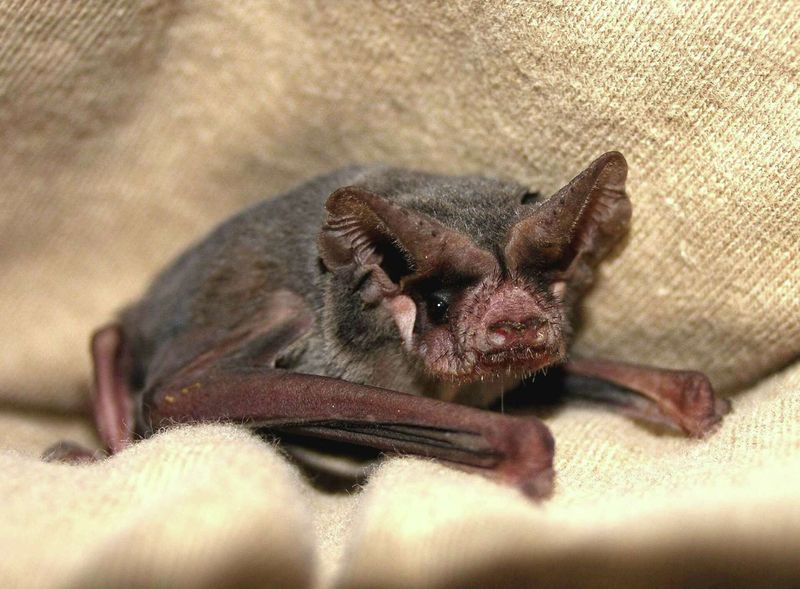
The Mexican free-tailed bat is a remarkable sight in Texas, particularly at dusk when massive colonies take flight. These bats, known for their long, narrow wings and powerful flights, are a critical part of the ecosystem, controlling insect populations.
Found in vast numbers in places like the Bracken Cave, these bats form one of the largest congregations of mammals in the world. Watching them emerge en masse is a spectacle that draws visitors from around the globe, showcasing the natural wonders and biodiversity Texas has to offer.
Bobcat
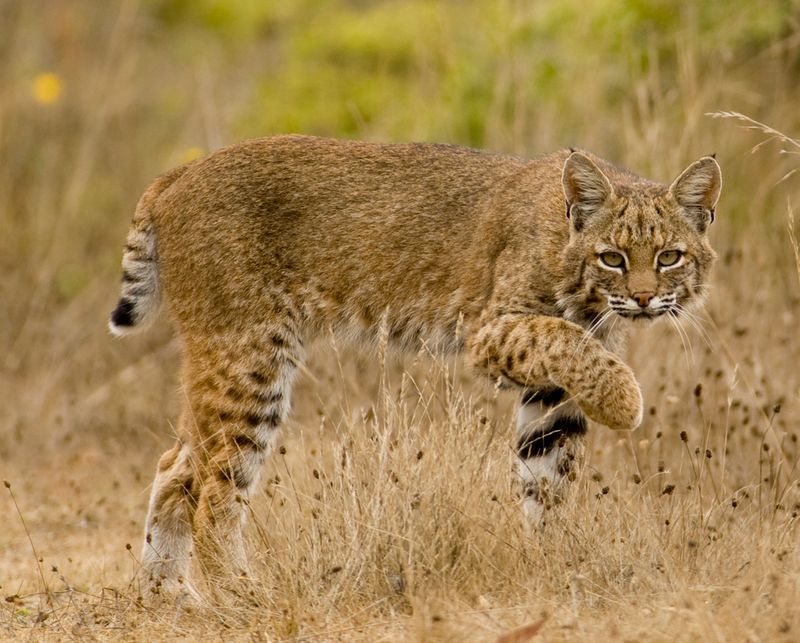
Bobcats are elusive and majestic animals, embodying the wild essence of Texas. These medium-sized cats are skilled hunters, preying on small mammals and birds with precision and stealth. Their adaptability allows them to thrive in varied habitats, from swamps to urban areas.
Characterized by their tufted ears and short tails, bobcats are solitary creatures, often seen only by those who venture into the wild with patience and a keen eye. Their presence is a reminder of the untamed spirit that still prowls the Texan wilderness, hidden in the shadows.
Red-Tailed Hawk
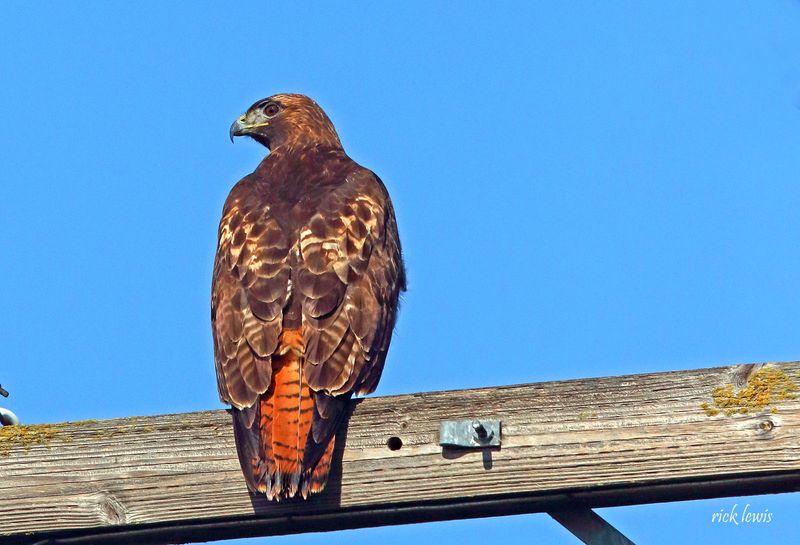
The red-tailed hawk is a symbol of power and grace, often observed gliding effortlessly over the vast Texan plains. With their broad wings and distinctive red tails, these birds of prey are expert hunters, using their keen eyesight to spot small animals from great heights.
Red-tailed hawks are known for their adaptability, thriving in open fields, forests, and even suburban areas. Their presence is marked by their signature screech, a sound that echoes across the landscape, reminding all who hear it of the wild, watchful guardians of Texas skies.
Alligator Gar
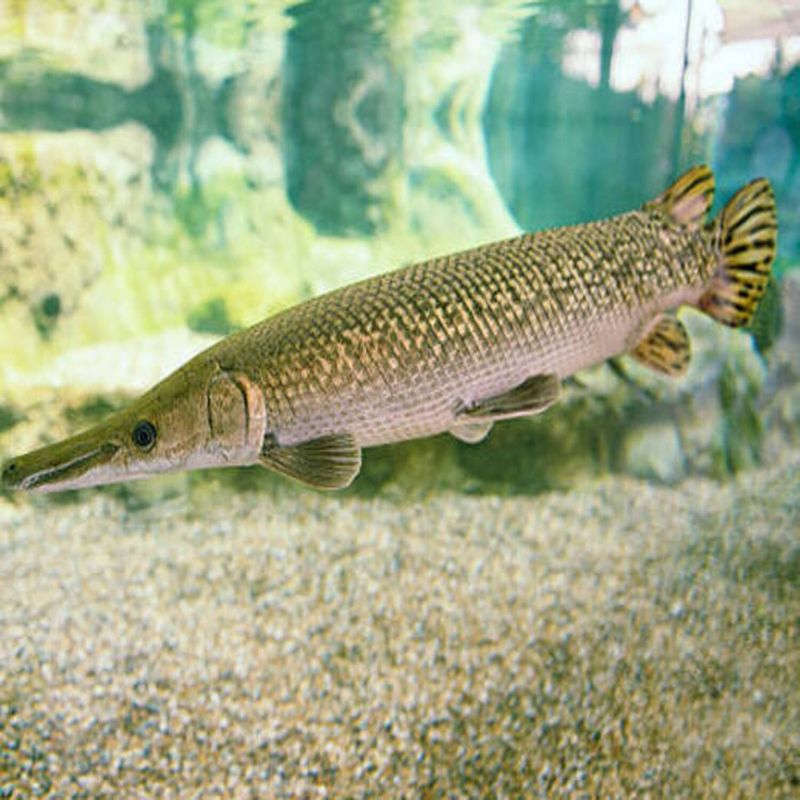
In the depths of Texas’ rivers lurks the alligator gar, a fish that resembles a creature from ancient times. With its elongated body and sharp teeth, this impressive predator is a sight to behold. Capable of growing over ten feet long, it reigns as one of the largest freshwater fish in North America.
Despite its fearsome appearance, the alligator gar is a crucial part of the aquatic ecosystem, controlling fish populations and maintaining balance. Anglers and nature enthusiasts alike admire its resilience and prehistoric charm, making it a symbol of Texas’ rich natural history.
Javelina
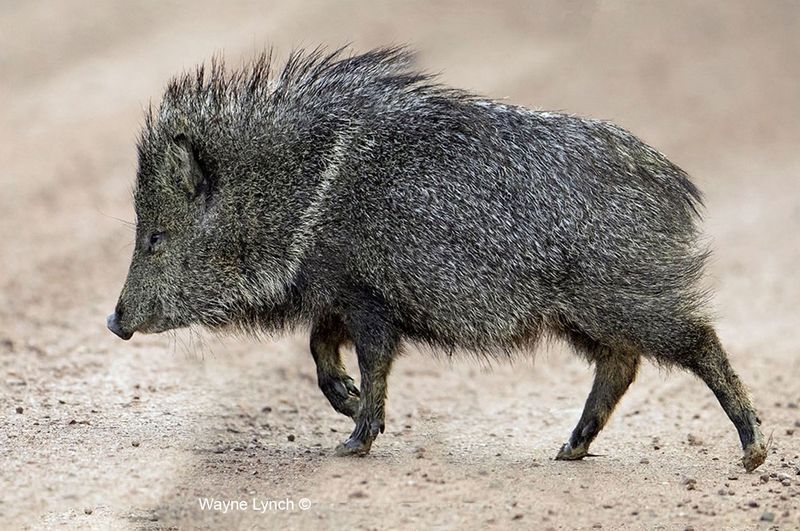
Javelinas, or collared peccaries, are often mistaken for wild pigs but are a distinct species native to the Texan landscape. These robust creatures travel in herds, foraging through the scrublands for roots, fruits, and insects. Their coarse fur and sharp tusks serve as protection in the wild.
Javelinas are social animals, communicating with a variety of sounds and scents to maintain group cohesion. Observing a herd in action offers a glimpse into their complex social structure and adaptability, highlighting their role in the diverse tapestry of Texas wildlife.
Pronghorn Antelope
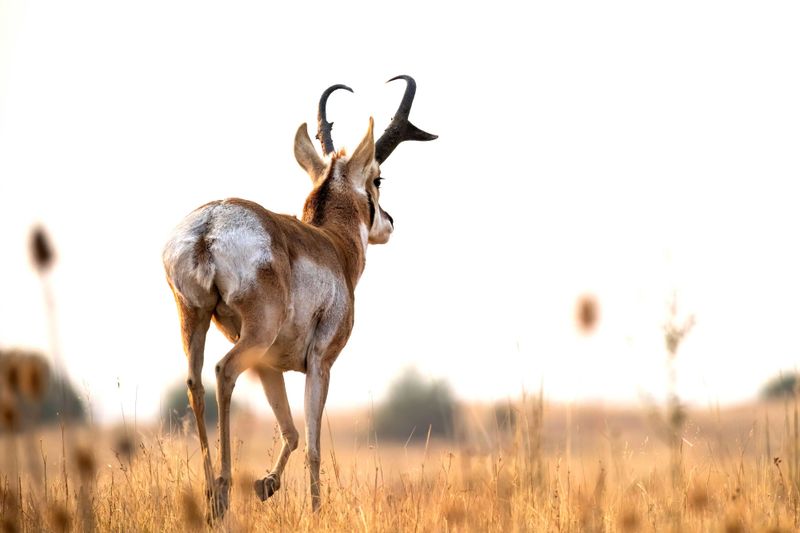
The pronghorn antelope, often mistakenly referred to as an antelope, is a unique North American species found in the open prairies of Texas. Renowned for their speed, pronghorns are the second-fastest land animals, capable of reaching speeds up to 60 mph.
These elegant creatures are built for endurance and agility. Their distinct horns and striking markings make them a favorite among wildlife observers.
Pronghorns play a vital role in the prairie ecosystem, grazing on grasses and shrubs while evading predators with their incredible speed and keen senses.
Texas Indigo Snake
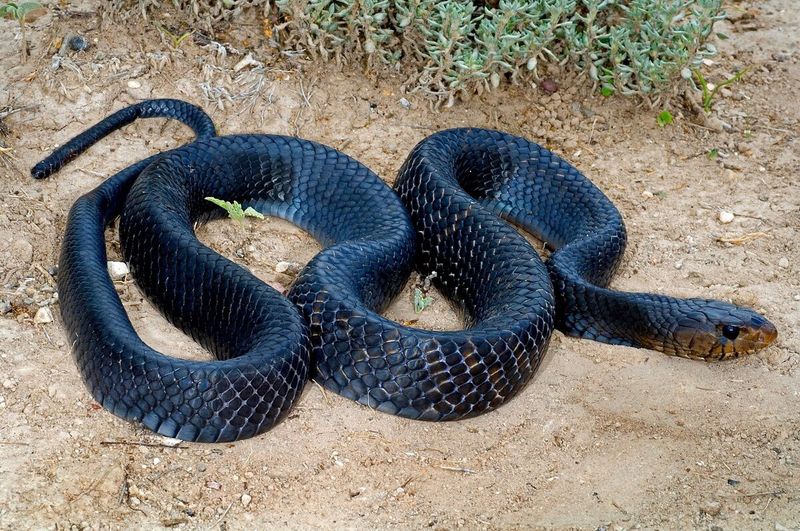
The Texas indigo snake is a magnificent serpent, known for its striking size and coloration. Growing up to eight feet long, this non-venomous snake boasts glossy, iridescent scales that shimmer in shades of blue and black. It’s a formidable predator, feeding on a variety of prey, including venomous snakes.
Indigo snakes are valued for their role in controlling rodent populations and maintaining ecological balance. Despite their intimidating size, they pose no threat to humans and are admired for their beauty and ecological importance, embodying the wild allure of Texas.
Ocelot
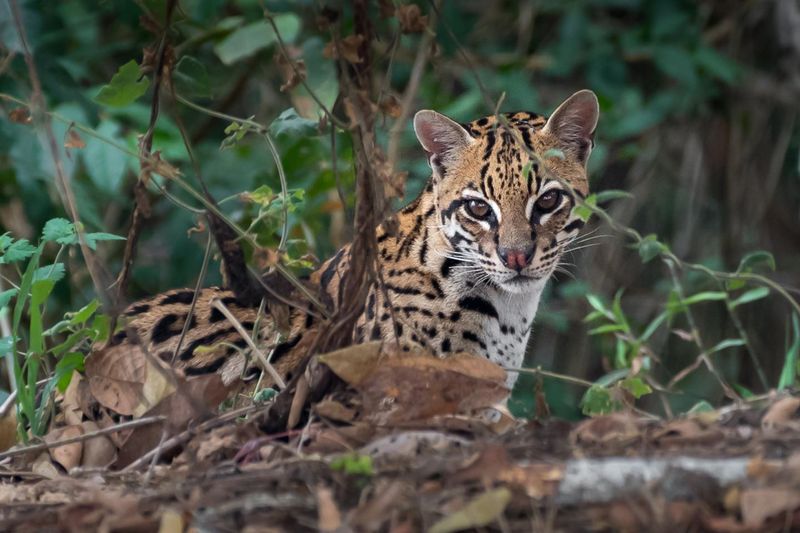
The ocelot is a rare and captivating feline, roaming the dense jungles and brushlands of southern Texas. With its striking spotted coat and graceful build, this nocturnal hunter exudes an air of mystery. Ocelots rely on their keen senses and stealth to hunt small mammals and birds.
Unfortunately, habitat loss has made ocelots one of the most endangered species in the U.S. Conservation efforts are ongoing to protect these beautiful cats and their habitats.
Encountering an ocelot is a rare and thrilling experience, offering a glimpse into the delicate balance of Texas’ wild ecosystems.
Whooping Crane
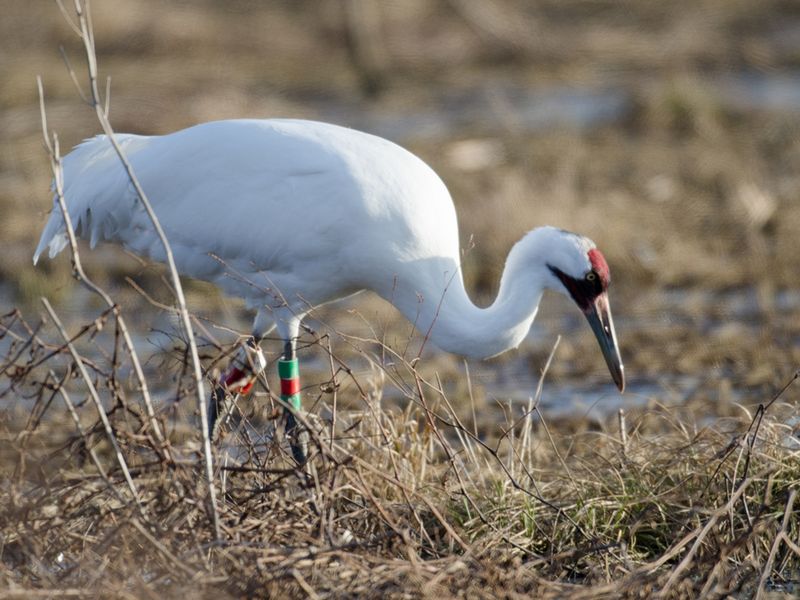
The whooping crane is an iconic symbol of perseverance and recovery, with its majestic stature and distinctive call. Standing at nearly five feet tall, these cranes are among the tallest birds in North America.
They migrate through Texas, often seen wading gracefully in wetlands. Once on the brink of extinction, whooping cranes have made a remarkable comeback thanks to dedicated conservation efforts.
Their presence in Texas wetlands is a testament to the successful preservation of natural habitats, offering birdwatchers and nature lovers an inspiring glimpse into the resilience of wildlife.
Coyote
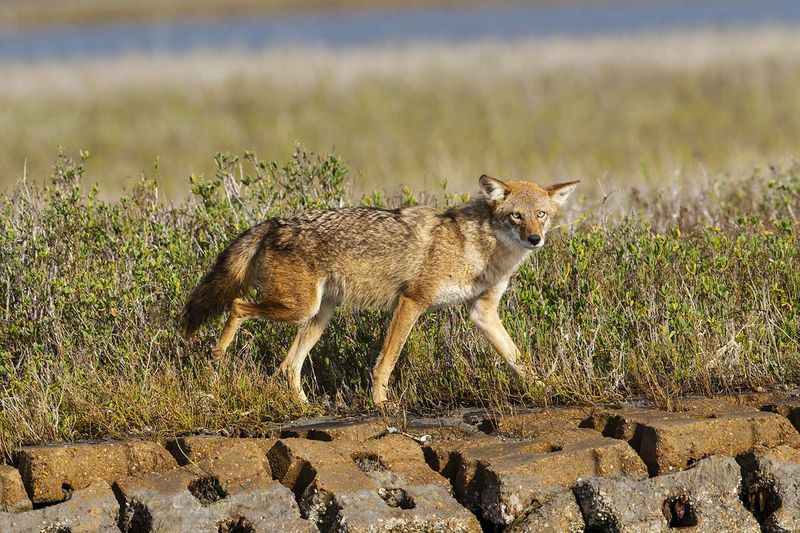
Coyotes are among the most adaptable and widespread animals in Texas, known for their intelligence and resourcefulness. These canines thrive in diverse environments, from urban areas to remote deserts, and play a crucial role as predators, helping to control populations of rodents and other small animals.
Despite their sometimes contentious relationship with humans, coyotes are an integral part of the ecosystem, showcasing the adaptability and resilience of Texas wildlife.
Their haunting howl is a familiar sound across the landscape, echoing the untamed spirit of the vast Texan wilderness.
Black-tailed Prairie Dog
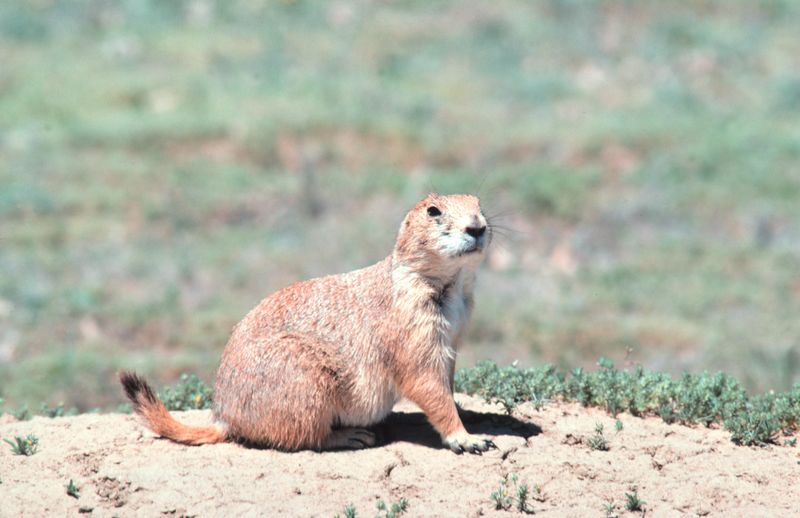
The black-tailed prairie dog, a social and industrious rodent, is an essential component of the Texas grasslands. These creatures live in extensive colonies known as “towns,” where they communicate with a complex system of vocalizations and body language.
Prairie dogs play a vital role in the ecosystem by aerating the soil, promoting plant growth, and providing food for predators. Observing their interactions offers insight into their highly organized societies, highlighting the interconnectedness of the Texan plains and the creatures that inhabit them.
American Bison
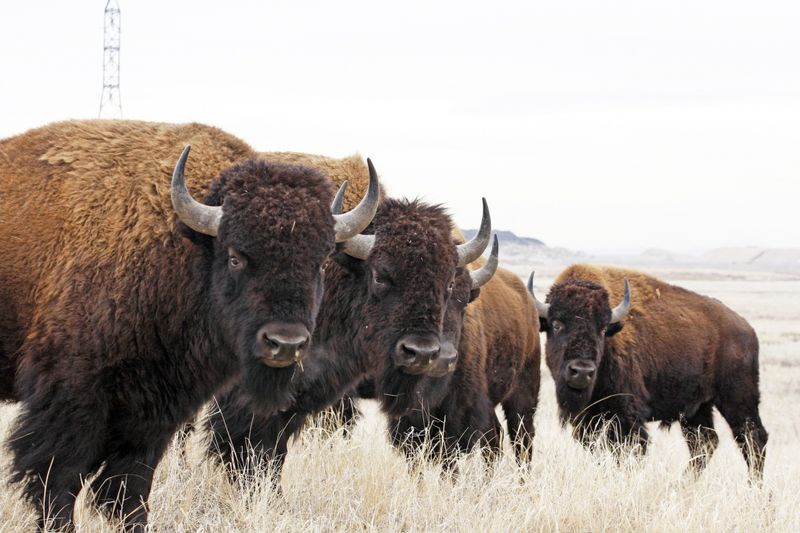
The American bison, a symbol of strength and resilience, roams the open plains of Texas, embodying the state’s wild and rugged spirit. These massive animals are impressive, with shaggy coats and formidable horns.
Once on the brink of extinction, bison have made a significant recovery, thanks to conservation efforts. They play a crucial role in maintaining the health of the prairie ecosystem, grazing on grasses and creating habitat for other species.
Observing a bison herd is a powerful reminder of the natural heritage and enduring wildlife of Texas.
Gulf Coast Jaguarundi
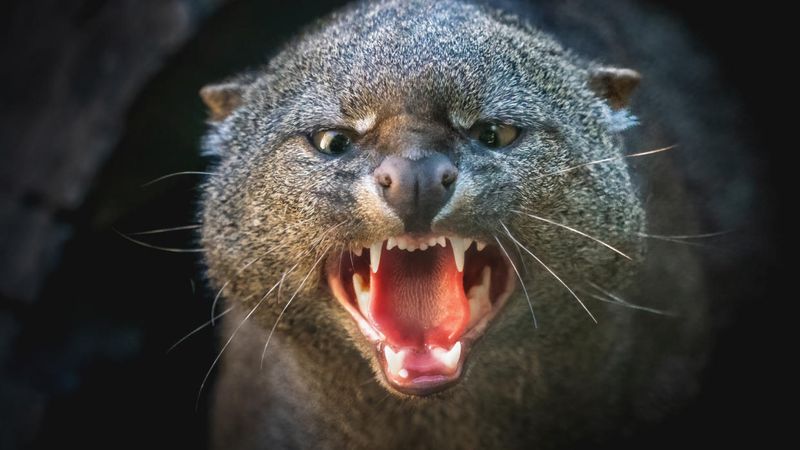
The Gulf Coast jaguarundi is an elusive and enigmatic feline, rarely seen even by seasoned wildlife enthusiasts. With its sleek, elongated body and long tail, it moves silently through the dense coastal forests of Texas, hunting small mammals and birds.
Despite its low profile, the jaguarundi’s presence is crucial for maintaining ecological balance, controlling prey populations, and supporting biodiversity.
Conservation efforts aim to protect its habitat and ensure the survival of this mysterious creature, which continues to intrigue those fortunate enough to glimpse its shadowy form.
Rio Grande Chirping Frog
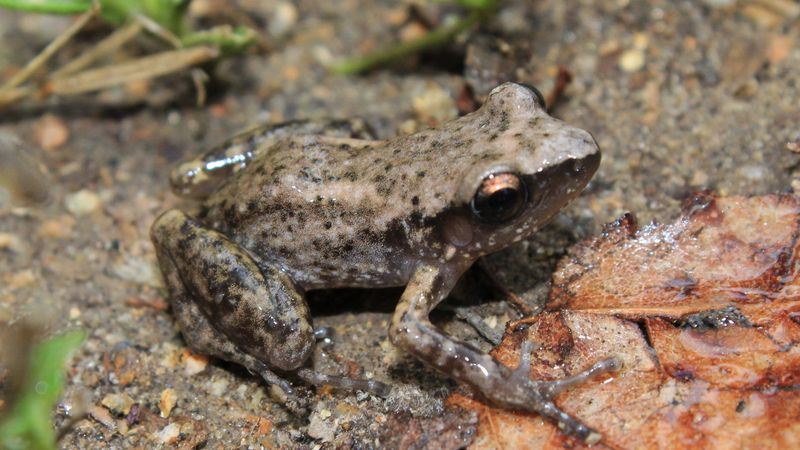
The Rio Grande chirping frog is a small amphibian with a big voice, often heard more than seen. These frogs inhabit damp areas near rivers and ponds, where their distinctive calls fill the night air.
Adapted to urban environments as well as natural habitats, they showcase the remarkable resilience of Texas wildlife. Their presence is an indicator of healthy ecosystems, as they play a role in controlling insect populations.
Listening to their chorus is a delightful experience, offering a glimpse into the vibrant nocturnal life of the Texan landscape.
Green Jay
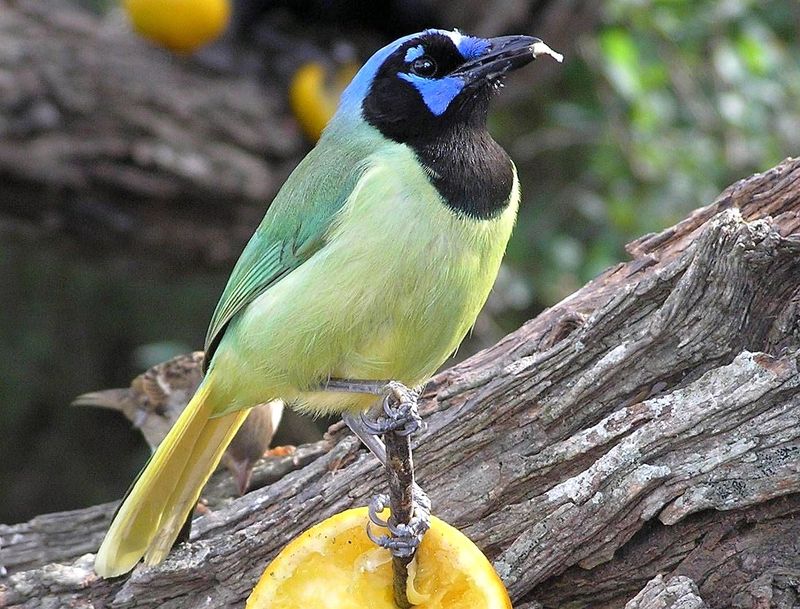
The green jay is a dazzling bird, known for its vibrant plumage and lively behavior. Found in the wooded areas of southern Texas, these social birds are often seen foraging in groups, their calls echoing through the trees.
Green jays are intelligent and curious, known to use tools and problem-solve in their quest for food. Their striking appearance and playful antics make them a favorite among birdwatchers, offering a splash of color and vitality in the rich tapestry of Texan wildlife.
Bald Eagle
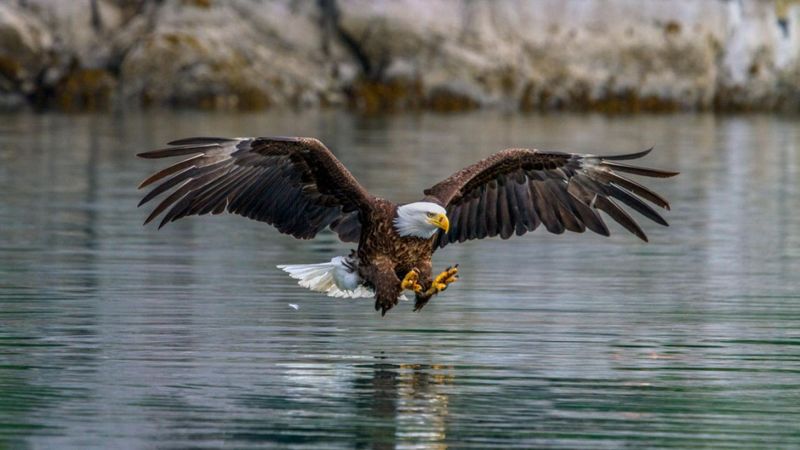
The bald eagle, a symbol of freedom and strength, can be seen gliding over Texas’ rivers and lakes. With its powerful wings and keen eyesight, this raptor is an expert hunter, preying on fish and small mammals.
Bald eagles were once endangered, but conservation efforts have helped their numbers rebound. Observing a bald eagle in flight is an awe-inspiring experience, a reminder of the resilience of nature and the wild beauty that Texas has to offer its residents and visitors alike.
Texas Coral Snake
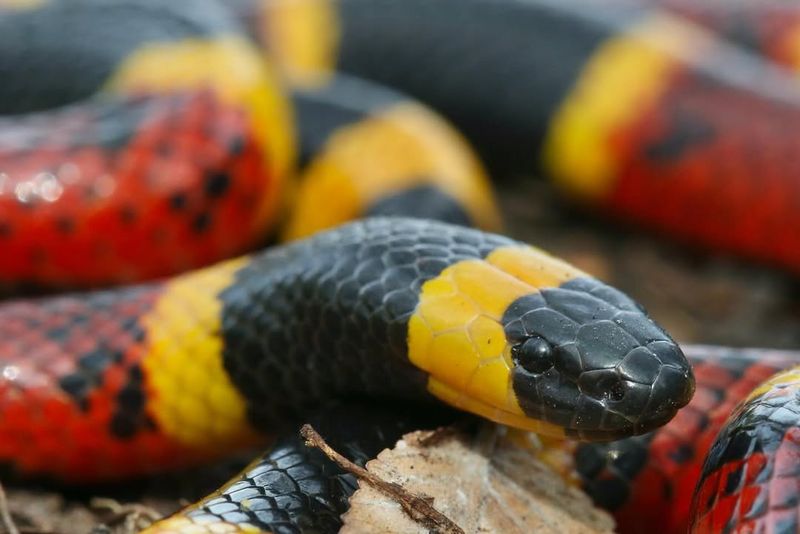
The Texas coral snake is a strikingly beautiful reptile, known for its brightly colored red, yellow, and black banding. Although venomous, these snakes are reclusive and rarely pose a threat to humans.
Coral snakes play an important role in controlling pest populations. Their presence in the ecosystem highlights the intricate balance of nature, where even the most dangerous creatures have their place.
Spotting a Texas coral snake is a reminder of the vibrant and sometimes perilous diversity that thrives in the Texas wilderness.
Monarch Butterfly
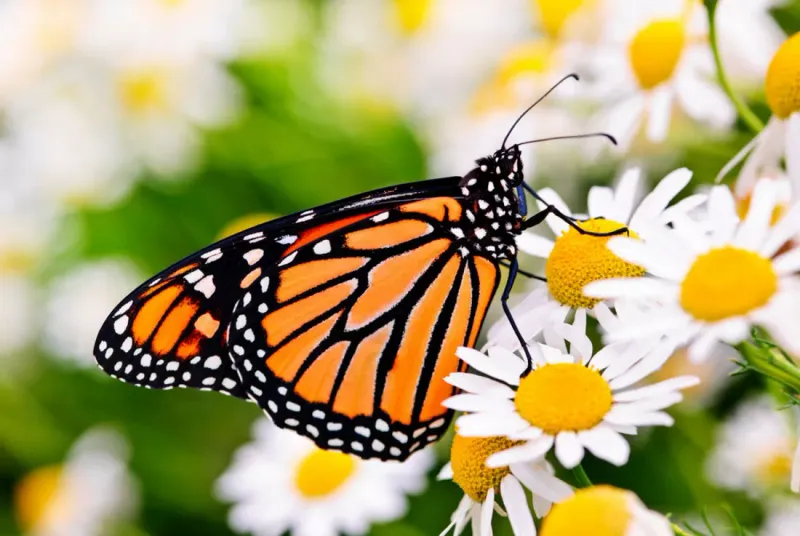
The monarch butterfly is a creature of delicate beauty and incredible endurance, gracing the Texan landscape during its epic migration. These butterflies travel thousands of miles from Canada to Mexico, with Texas serving as a crucial stopover.
Monarchs rely on milkweed plants for breeding, making the preservation of their habitat vital for their survival. Observing a fluttering cloud of monarchs is a breathtaking sight, symbolizing the interconnectedness of ecosystems across continents and the vital role of Texas in supporting this global journey.
Texas Spiny Lizard
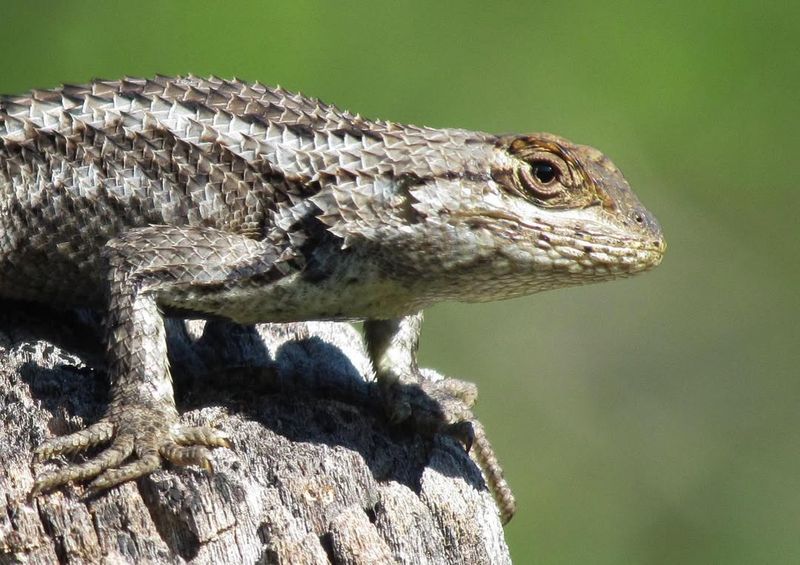
The Texas spiny lizard is a hardy reptile, well-adapted to the hot and arid environments of the state. With its rough, spiky scales and agile movements, it is a common sight in Texan gardens and woodlands.
These lizards are adept climbers, often seen basking on fences or tree trunks. They play a role in controlling insect populations, showcasing the interconnected web of life in Texas.
Their presence adds to the rich biodiversity of the region, illustrating the fascinating variety of life that thrives in the state’s diverse climates.

